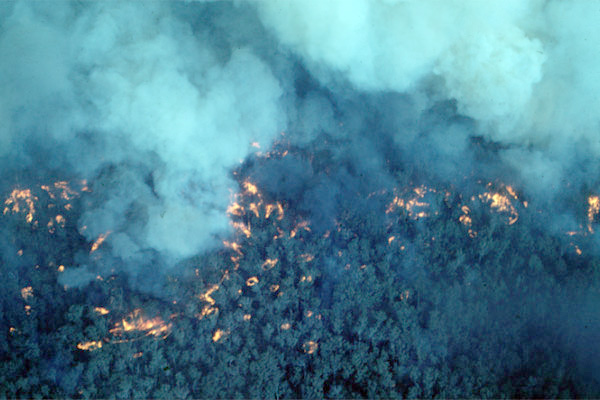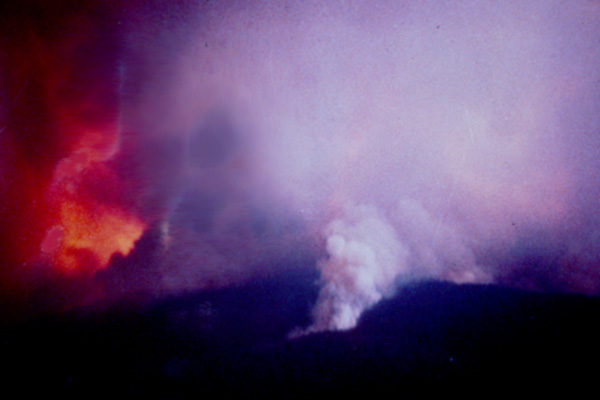The 1982/83 Fire Season
R Rawson
The 1982/83 fire season was almost certainly the worst forest fire season experienced by FCV personnel since the fires of 1939.
It is best remembered for the fires of Ash Wednesday (16 Feb 1983), but significant fires occurred across the State from August 1982 until March 1983. On 8 January, at a fire near Greendale, two FCV staff, Alan Lynch and Des Collins, were killed while operating a dozer to establish a fireline adjacent to the northern flank.
The first significant fire occurred in late August of 1982 in the Little Desert and the last, the second of two major fires near Cann River began on 4 March 1983, and during this period FCV personnel attended 878 fires which burnt a total of about 486,000 ha in the area for which the FCV had fire suppression responsibility.
The fire behaviour which was experienced on Ash Wednesday was beyond any previously recorded, and way outside the bounds of what was predicted by the available methods at that time. Peter Billing did some exceptional work in reconstructing the spread of the East Trentham/Macedon and Dean Marsh-Lorne fires, and showed that spread rates were at times as high as about 10km/h within forested areas - two to three times what might have been predicted.
In 1981/82 the FCV first trialled the use of the Modular Airborne Firefighting System (MAFFS), but the system was trialled and evaluated extensively in 1982/83 (Rawson and Rees, 1983), but shown to be ineffective. However, medium helicopters supplied by the National Safety Council of Australia, Victorian Division (NSCA) were effective because they were capable of rapid turn around times.
A crude line-scanner owned by the CSIRO was also used operationally on a Victorian fire for the first time. It scanned the Warbuton fire that developed on Ash Wednesday and helped determine, under a dense smoke layer, that this fire had a massive unburnt area inside the anticipated control lines. By 1984/85 the NSCA were providing a better scanner operating from a Beechcraft King Air and it was used extensively in fires in NE Victoria (Kevin Ritchie, Bruce Dymond were key interpreters).
At this time there were also changes under way in the FCV's approach to fire suppression. District Foresters had been, traditionally, directly responsible for any fire in their District, but within Central Division a new way (Large Fire Organisation) was being introduced and it was probably the forerunner of the ICS as we know it today.
See also:
The 1982-83 Bushfire Season - P McHugh. October 2022
When the Bush Burned. Cann River: The Big Fires, 1983 - H Quick (1983)
The Firebombing Gallery for photos of MAFFS, and medium helicopter operations in 1984/85
Map of the 1982-83 Fires 1
The Major Fires Originating 16 February 1983 - CFA, December 1983
Athol Hodgson's summary of the 1984/85 Fire Season
1 Dept of Energy, Environment and Climate Action

Spotfires near the head of the first major Cann River fire
January 1983
Source: R Graham

Welcome to Hell - near the head of the first major Cann River fire
January 1983
Source: R Graham
